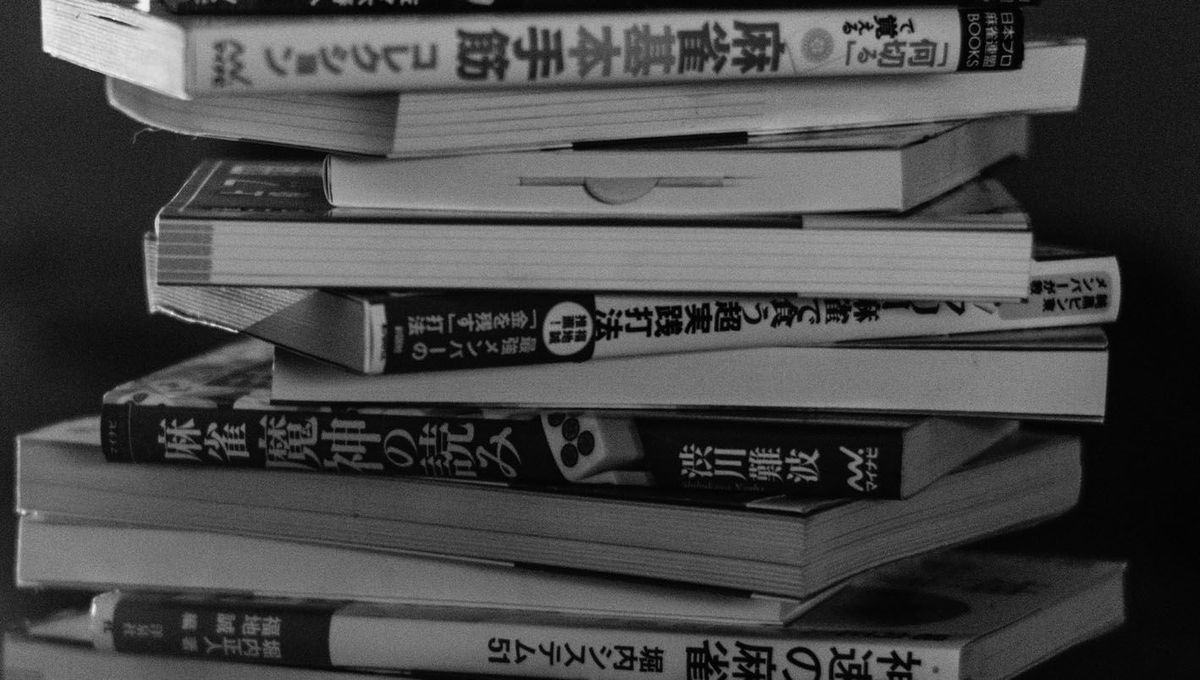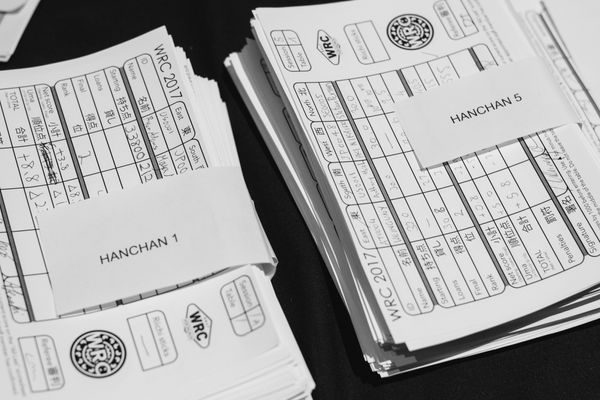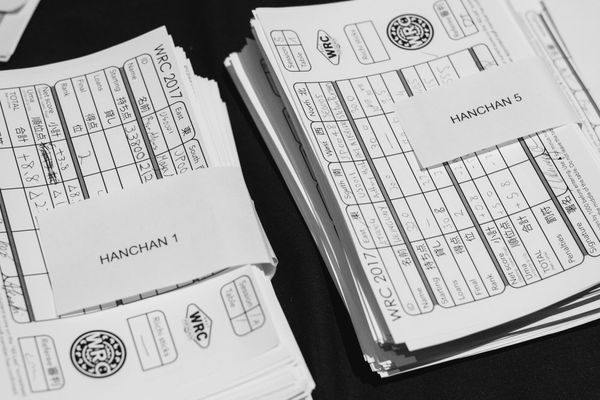Mahjong Keypoints: How to become the strongest, 1

Last year I bought a bunch of Kindai Mahjong magazines and read through most of them. I skipped most of the manga and concentrated on the mahjong articles (yes, I am a bitter man, and you can sue me later). In one of my editions of Kindai Mahjong Original, Houou (Phoenix Rank) of the 27th Hououisen, and Fourth Dan from the Japanese Professional League of Mahjong, Horiuchi Masahito, who is known to have a strong background of digital mahjong and a steady win record thanks to his defensive technique, has written a few articles about mahjong. This is probably the only translation into English of something written by Horiuchi. Those who followed him last year during the live edition of Hououisen broadcasted in NicoNico don't need an introduction for this person.
Mahjong Keypoints: How to become the strongest
Teacher: Horiuchi Masahito
Defense Edition
This member of the Japanese Professional Mahjong League has stirred up some debate; he is the winner of the 27th Hououisen League and his specialty is digital mahjong. But it is not the same kind of digital mahjong that you have seen so far, which concentrates in attacking. Horiuchi speaks to "Kindai Mahjong" about his digital style that concentrates on defense! A style that has yet to be talked about by modern mahjong theory. What will happen when the man with an unique defensive style answers some questions for this column? Don't hesitate to read!
![]()
![]()
![]()
![]()
![]()
![]()
![]()
![]()
![]()
![]()
![]()
![]()
![]()
Tsumo: ![]() Dora:
Dora: ![]()
Question: I often turn to discarding suji when I run out of safe tiles, but I deal in pretty often that way. Is there something like situations where you can trust suji and situations where you cannot trust suji? What's the difference? If there is any, please let me know.
Horiuchi Pro's answer:When you run out of safe tiles, it is not a mistake to begin trusting suji. However, suji aren't perfect, and just like you say, there are cases when you deal in. The most dangerous suji of all, are those closer to your opponent's tenpai discard. Most of the time you can't really know what the "tenpai discard" itself was, but if your opponent declares riichi then it is easy to tell. If your opponent has reached, the suji for the tile they reached with, excluding tsumogiri, riichi is the most dangerous of all. For example, if you got to tenpai with the above hand, you would normally riichi with ![]() , waiting for
, waiting for ![]() . This is the famous move referred as "moro hikkake riichi". Now, let's assume that instead of getting to tenpai, you draw a
. This is the famous move referred as "moro hikkake riichi". Now, let's assume that instead of getting to tenpai, you draw a ![]() . As long as there is no strong reason to do so, you wouldn't keep this
. As long as there is no strong reason to do so, you wouldn't keep this ![]() and discard
and discard ![]() . Since everyone would normally try to keep ryankan shapes like this
. Since everyone would normally try to keep ryankan shapes like this ![]()
![]()
![]() for as long as possible, this makes the suji for discarded tiles near tenpai and for the discard for tenpai declaration itself a lot more dangerous.
for as long as possible, this makes the suji for discarded tiles near tenpai and for the discard for tenpai declaration itself a lot more dangerous.
Post-riichi suji is relatively safer. The suji that is relatively safest of all is the suji generated after a riichi. Suji hikkake is a move so well known that it has a name of its own, and thus many players will feel an added chance to get a ron win if they are waiting on the suji for one of their discards, and this may encourage them to riichi much more easily. Some people would, for example, riichi the same ![]() kanchan if they have already discarded a
kanchan if they have already discarded a ![]() , but aim to otherwise improve their hand if not. And it is because suji that were generated after a riichi were not considered by the player at the time he made his decision, that these are relatively safer than the suji before it. That is why even if they are all suji, let's discard the suji of the tiles discarded after a riichi before discarding the suji for the tiles someone has discarded near tenpai.
, but aim to otherwise improve their hand if not. And it is because suji that were generated after a riichi were not considered by the player at the time he made his decision, that these are relatively safer than the suji before it. That is why even if they are all suji, let's discard the suji of the tiles discarded after a riichi before discarding the suji for the tiles someone has discarded near tenpai.
The vecinity of the dora is always dangerous. There are, however, cases where post-riichi suji are dangerous. The main case is: tiles near the dora. For example, if the current dora is ![]() and the person who reached discards
and the person who reached discards ![]() later on, if you discard
later on, if you discard ![]() thinking "SUJI!", there are many cases where you will deal into a penchan wait for
thinking "SUJI!", there are many cases where you will deal into a penchan wait for ![]() . This is because if you are using dora, you are likely to declare a sensei-riichi even with a bad shape like that. Just because the tiles around the dora have become suji, doesn't mean you should discard them so easily. And, for example, in rules that use red fives, you should be careful about the tiles 4 and 6 too. Even if
. This is because if you are using dora, you are likely to declare a sensei-riichi even with a bad shape like that. Just because the tiles around the dora have become suji, doesn't mean you should discard them so easily. And, for example, in rules that use red fives, you should be careful about the tiles 4 and 6 too. Even if ![]() and
and ![]() have passed, and you discard
have passed, and you discard ![]() because it is the suji in the middle, there are many cases where you will deal into a kanchan wait because they were using
because it is the suji in the middle, there are many cases where you will deal into a kanchan wait because they were using ![]() . Even if they are all suji, they have different properties and levels of peril. You cannot just mindlessly discard them thinking "this is safe because it is suji."
. Even if they are all suji, they have different properties and levels of peril. You cannot just mindlessly discard them thinking "this is safe because it is suji."
/// end
That is it for this week. Stay tuned for the rest of the series, as they get hotter and hotter, only in Osamuko.com. The site where we are not obliged to help you, but we do it anyway!



